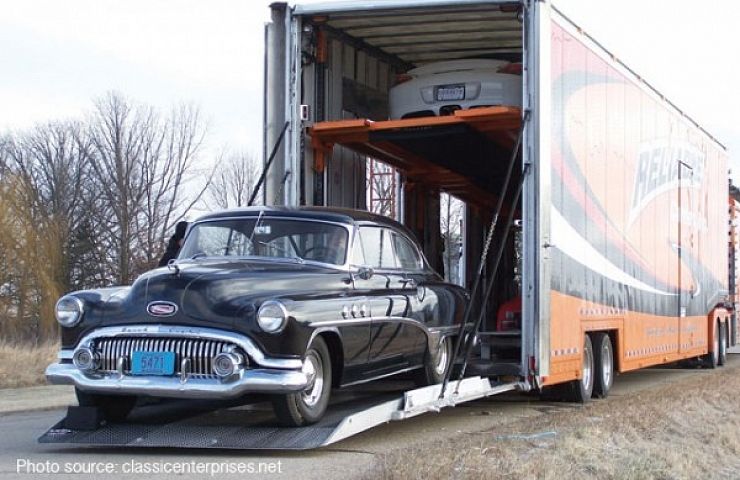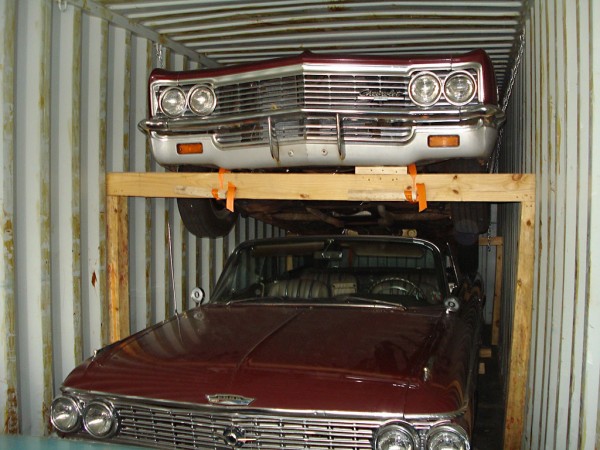The internet has opened up a whole new gateway of buying options and investment opportunities in importing classic cars. If you can hunt down a killer deal outside the USA and do the work required to bring it into the country, you can enjoy the privilege of owning an extraordinarily uncommon vehicle, or flip it on eBay motors for a tidy profit. The questions are:
- Where do you look to find classics outside the USA in suitable condition?
- How do you actually bring the vehicle to the US?
Where to Find the Classics Overseas
Many people look to parts of Europe for classic imports – Southern Europe in particular. This is partially because the countries bordering the Mediterranean have dry, warm climates that don’t facilitate corrosion, and partially because these countries currently have (or have recently had) severely depressed economies. With favorable exchange rates and a local populace that’s looking to liquidate assets, it’s possible to obtain a classic vehicle in great condition for a song.
Of course, this isn’t exactly “news.” The selection of classic cars that US collectors might find interesting is already running low in Italy and Spain. However, Greece, Cyprus, and other Mediterranean Islands have deals if you’re diligent.
Outside of Europe, New Zealand, Australia, and South Africa are rich sources of classic vehicles, as again these nations have favorable weather conditions that don’t facilitate rust. An Australian or South African version of highly sought-after classic can be a great deal, at least if you’re willing to do the work of bringing the vehicle to the USA.
How to Bring a Classic Vehicle to The United States
Ideally, you would buy a classic overseas in much the same way you would in the USA. You’d look at the vehicle personally, get an expert appraisal, make an offer, and then (hopefully) start the process of getting it home from there. Assuming you’re not in a big hurry, you can arrange International vehicle shipping at an affordable rate (which is mostly based on weight, by the way), and then personally work with US Customs to provide all the proper paperwork proving ownership and to pay any taxes.
However, as has been said many times already, this is a difficult process…there’s no shame in hiring a shipping agent to take care of the details. In fact, it can be a rather savvy move, as something as “simple” has important a car can often become extraordinarily complex when there’s a problem with paperwork. Hiring an experienced shipping agent removes a lot of hassles.
But however you decide to go, there are a few things to know about buying a vehicle overseas and importing it to the USA.
International Vehicle Shipping Advice
The most inexpensive way to ship a car from one continent to another is called “roll-on/roll-off” shipping. Your vehicle is literally driven onto the deck of a ship, strapped down, and hauled across the ocean. There are certain risks associated with this kind of shipping (such as exposure to a harsh marine environment for weeks, risks of damage during loading and unloading), which is part of the reason it’s so affordable. What’s more, classic vehicle buyers should take not that this type of shipping requires a vehicle that’s roadworthy. If you’re buying a project car that doesn’t run, this shipping method won’t be available to you.
The more secure (and more costly) shipping option is to opt for container shipping. If the car you’re shipping is valuable – such as exotics or exceptionally rare classic – this is the only option to consider. Essentially, a vehicle is loaded into its own container, strapped down, and then locked up. You rent the container, pay the freight, and it’s loaded into a cargo ship for transport. The advantages in container shipping are numerous:
- The container is secure and damage during loading/unloading is nearly impossible.
- The container can be loaded with vehicles that don’t run, vehicles that come with extra parts, etc.
- The contents of the container typically aren’t known to the crew or anyone that unloads the container, so the odds of theft are much lower
Of course, container shipping isn’t as affordable as roll-on/roll-off.
Importing Classic Vehicles Into the USA
When it comes to importing classics, it’s actually not all that complicated a task in the United States…with emphasis on the word “classic.” Importing a newer car – which US laws define as vehicles less than 25 years old – the process can be a huge hassle that’s astronomically expensive…but that’s a topic for another day. eBay Motors has simplified the steps that can get you started with a shipping quote from one of our seasoned shipping agents, such as uShip, who can help you navigate the process of customs paperwork, logistics, and getting your prize vintage vehicle home safe.
Here’s some important things to note about bringing home a classic:
- For vehicle’s 21 years or older, there’s no EPA compliance requirements for imports.
- If a vehicle is older than 25 years, it can be imported without regard to compliance of DOT Federal Motor Vehicle Safety Standards.
- For vehicles 25 years or older, it would be entered under box 1 on the HS-7 declaration form for customs at the time it is imported in the United States.
- You must have documentation to prove the age of the vehicle, unless it is affixed to the vehicle by the manufacturer.
- The importer must declare code E on for 3520-1 for the EPA.
- You must have documentation to prove vehicle ownership
Once you clear the border with your car and get squared away with customs, it will be business as usual with your new purchase. You’ll need to comply with your state’s requirements for insurance coverage, registration, and so on. Just like with a domestic purchase, you’ll need to have your bill of sale, and in most foreign countries, there is no “title” equivalent — they instead use a registration document to show ownership.
Finally, once you’ve got the vehicle stateside and the paperwork is all taken care of, you can drive it, list it on eBay…whatever you like. For inspiration, here’s a right-hand drive 1982 FJ Cruiser that was recently imported according to the seller.







